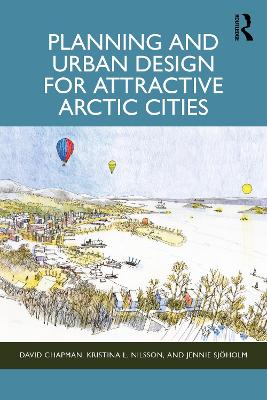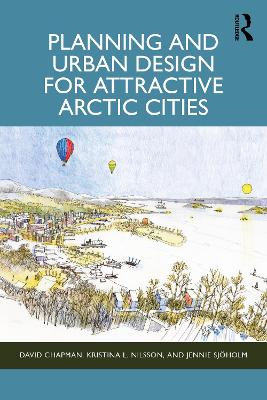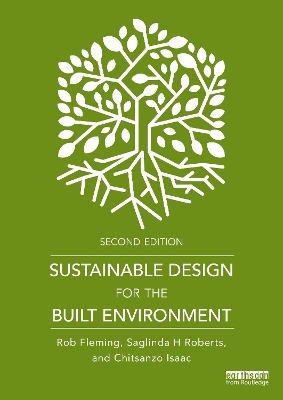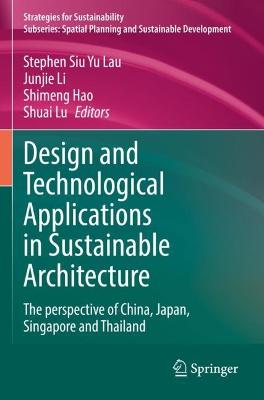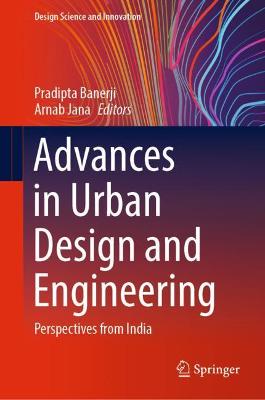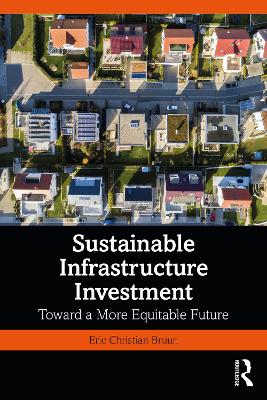Sustainable Communities through Digital Transformation
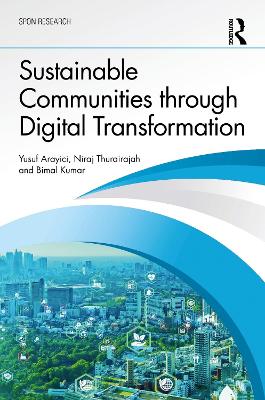 portes grátis
portes grátis
Sustainable Communities through Digital Transformation
Arayici, Yusuf; Kumar, Bimal; Thurairajah, Niraj
Taylor & Francis Ltd
12/2024
401
Dura
9781032449036
Pré-lançamento - envio 15 a 20 dias após a sua edição
Descrição não disponível.
Part 1: Introduction
Chapter 1: Introduction
Part 2: Enablers, Tools, and Methods for Physical Sustainability
Chapter 2: Building Information Modelling for Deep Retrofitting of Residential Properties by Stephen Phillips (London Southbank University, UK)
Chapter 3: Enhancing Sustainability through High Performance Weather Adaptive Facades by Kishor Zingre, (Northumbria University, UK)
Chapter 4: Exploring Sustainable FM KPIs and the Role of Digital Twins for Sustainable FM Goekhan Demirdoegen, (Yildiz Technical University, Turkey); Zeynep Isik, (Yildiz Technical University, Turkey); Yusuf Arayici, (Northumbria University, UK)
Chapter 5: Stranded Assets in Built environment: Evaluation of Information in Energy Performance Certificates by Kevin Muldoon-Smith, (Northumbria University, UK); Paul Greenhalgh (Northumbria University, UK); Stephen Philips (London Southbank University, UK)
Part 3: Go Green with Digital for Environmental Sustainability
Chapter 6: The Digital Foundations for Sustainable Social Housing Decarbonisation by Richard Watson, Tara Hipwood and Zahirah Mokhtar Azizi (Northumbria University, UK)
Chapter 7: Promoting Built Asset Flood Resilience for Sustainable Development through Data Advantage by Onaopepo Adeniyi, (Northumbria University, UK)
Chapter 8: Measuring Walkability in the Digital Age: Open-Source Data and Spatial Modelling by Ayse Ozbil Torun, (Northumbria University, UK)
Chapter 9: Dealing with Uncertainties of Embodied Carbon Estimates in the Digital Age by Zaid Alwan & Amalka Ranathungage, (Northumbria University, UK)
Part 4: Waste Removal and Lean Practices with Digital for Economic Sustainability
Chapter 10: Knowledge Pipelines: Coordinating Data and Information in the Digital Built Environment by Kevin Muldoon-Smith, (Northumbria University, UK)
Chapter 11: Critical barriers to blockchain-enabled smart contracts adoption in public-private partnership projects: An exploratory study by Ameyaw Ernest and Bimal Kumar, (Northumbria University, UK)
Chapter 12: Digital Public Procurement Philosophies for SMEs to Function Effectively in Social Housing Projects by Richard Humphrey, (Northumbria University, UK)
Chapter 13: Circular Economy for Sustainable Built Environment through Building Information Modelling by Bahriye Ilhan Jones, (Northumbria University, UK); Hatidza Isanovic, (Istanbul Technical University, Turkey)
Chapter 14: Life Cycle Costing Assessment of Circular Building by Haibo Feng, Tarek Ahmed, (Northumbria University, UK)
Part 5: Values and Inclusivity with Digital for Social Sustainability
Chapter 15: A Multi-Level Perspective View to Sustainable Smart Cities as a Decarbonisation Pathway by Hidayati Ramli, Zahirah Mokhtar Azizi, Niraj Thurairajah, (Northumbria University, UK)
Chapter 16: Rendering the digital future - Understanding the social-spatial perception of dynamic IoT-based activities by Jiayi Jin, (Northumbria University, UK)
Chapter 17: Transforming Perceptions Through Design: How Interactive Technology and Spatial Design Bring Digital Advances to Wider Audiences by Ben Couture and Tarek Ahmed, (Northumbria University, UK)
Chapter 18: Radical Sustainability and Architectural Imagination: Can Digital Technologies Enhance Alternative Narratives of Place? By Nadia Bertolino, Cameron McEwan (Northumbria University, UK)
Part 6: Conclusion
Chapter 19: Summary and Conclusion
Chapter 1: Introduction
Part 2: Enablers, Tools, and Methods for Physical Sustainability
Chapter 2: Building Information Modelling for Deep Retrofitting of Residential Properties by Stephen Phillips (London Southbank University, UK)
Chapter 3: Enhancing Sustainability through High Performance Weather Adaptive Facades by Kishor Zingre, (Northumbria University, UK)
Chapter 4: Exploring Sustainable FM KPIs and the Role of Digital Twins for Sustainable FM Goekhan Demirdoegen, (Yildiz Technical University, Turkey); Zeynep Isik, (Yildiz Technical University, Turkey); Yusuf Arayici, (Northumbria University, UK)
Chapter 5: Stranded Assets in Built environment: Evaluation of Information in Energy Performance Certificates by Kevin Muldoon-Smith, (Northumbria University, UK); Paul Greenhalgh (Northumbria University, UK); Stephen Philips (London Southbank University, UK)
Part 3: Go Green with Digital for Environmental Sustainability
Chapter 6: The Digital Foundations for Sustainable Social Housing Decarbonisation by Richard Watson, Tara Hipwood and Zahirah Mokhtar Azizi (Northumbria University, UK)
Chapter 7: Promoting Built Asset Flood Resilience for Sustainable Development through Data Advantage by Onaopepo Adeniyi, (Northumbria University, UK)
Chapter 8: Measuring Walkability in the Digital Age: Open-Source Data and Spatial Modelling by Ayse Ozbil Torun, (Northumbria University, UK)
Chapter 9: Dealing with Uncertainties of Embodied Carbon Estimates in the Digital Age by Zaid Alwan & Amalka Ranathungage, (Northumbria University, UK)
Part 4: Waste Removal and Lean Practices with Digital for Economic Sustainability
Chapter 10: Knowledge Pipelines: Coordinating Data and Information in the Digital Built Environment by Kevin Muldoon-Smith, (Northumbria University, UK)
Chapter 11: Critical barriers to blockchain-enabled smart contracts adoption in public-private partnership projects: An exploratory study by Ameyaw Ernest and Bimal Kumar, (Northumbria University, UK)
Chapter 12: Digital Public Procurement Philosophies for SMEs to Function Effectively in Social Housing Projects by Richard Humphrey, (Northumbria University, UK)
Chapter 13: Circular Economy for Sustainable Built Environment through Building Information Modelling by Bahriye Ilhan Jones, (Northumbria University, UK); Hatidza Isanovic, (Istanbul Technical University, Turkey)
Chapter 14: Life Cycle Costing Assessment of Circular Building by Haibo Feng, Tarek Ahmed, (Northumbria University, UK)
Part 5: Values and Inclusivity with Digital for Social Sustainability
Chapter 15: A Multi-Level Perspective View to Sustainable Smart Cities as a Decarbonisation Pathway by Hidayati Ramli, Zahirah Mokhtar Azizi, Niraj Thurairajah, (Northumbria University, UK)
Chapter 16: Rendering the digital future - Understanding the social-spatial perception of dynamic IoT-based activities by Jiayi Jin, (Northumbria University, UK)
Chapter 17: Transforming Perceptions Through Design: How Interactive Technology and Spatial Design Bring Digital Advances to Wider Audiences by Ben Couture and Tarek Ahmed, (Northumbria University, UK)
Chapter 18: Radical Sustainability and Architectural Imagination: Can Digital Technologies Enhance Alternative Narratives of Place? By Nadia Bertolino, Cameron McEwan (Northumbria University, UK)
Part 6: Conclusion
Chapter 19: Summary and Conclusion
Este título pertence ao(s) assunto(s) indicados(s). Para ver outros títulos clique no assunto desejado.
Sustainable development;Sustainable communities;digital design and construction;digital built environment;social inclusivity;Building information modelling;knowledge society;communication;retrofit;digital transformation;decarbonisation;environmental sustainability;social sustainability;circular economy;visualisation
Part 1: Introduction
Chapter 1: Introduction
Part 2: Enablers, Tools, and Methods for Physical Sustainability
Chapter 2: Building Information Modelling for Deep Retrofitting of Residential Properties by Stephen Phillips (London Southbank University, UK)
Chapter 3: Enhancing Sustainability through High Performance Weather Adaptive Facades by Kishor Zingre, (Northumbria University, UK)
Chapter 4: Exploring Sustainable FM KPIs and the Role of Digital Twins for Sustainable FM Goekhan Demirdoegen, (Yildiz Technical University, Turkey); Zeynep Isik, (Yildiz Technical University, Turkey); Yusuf Arayici, (Northumbria University, UK)
Chapter 5: Stranded Assets in Built environment: Evaluation of Information in Energy Performance Certificates by Kevin Muldoon-Smith, (Northumbria University, UK); Paul Greenhalgh (Northumbria University, UK); Stephen Philips (London Southbank University, UK)
Part 3: Go Green with Digital for Environmental Sustainability
Chapter 6: The Digital Foundations for Sustainable Social Housing Decarbonisation by Richard Watson, Tara Hipwood and Zahirah Mokhtar Azizi (Northumbria University, UK)
Chapter 7: Promoting Built Asset Flood Resilience for Sustainable Development through Data Advantage by Onaopepo Adeniyi, (Northumbria University, UK)
Chapter 8: Measuring Walkability in the Digital Age: Open-Source Data and Spatial Modelling by Ayse Ozbil Torun, (Northumbria University, UK)
Chapter 9: Dealing with Uncertainties of Embodied Carbon Estimates in the Digital Age by Zaid Alwan & Amalka Ranathungage, (Northumbria University, UK)
Part 4: Waste Removal and Lean Practices with Digital for Economic Sustainability
Chapter 10: Knowledge Pipelines: Coordinating Data and Information in the Digital Built Environment by Kevin Muldoon-Smith, (Northumbria University, UK)
Chapter 11: Critical barriers to blockchain-enabled smart contracts adoption in public-private partnership projects: An exploratory study by Ameyaw Ernest and Bimal Kumar, (Northumbria University, UK)
Chapter 12: Digital Public Procurement Philosophies for SMEs to Function Effectively in Social Housing Projects by Richard Humphrey, (Northumbria University, UK)
Chapter 13: Circular Economy for Sustainable Built Environment through Building Information Modelling by Bahriye Ilhan Jones, (Northumbria University, UK); Hatidza Isanovic, (Istanbul Technical University, Turkey)
Chapter 14: Life Cycle Costing Assessment of Circular Building by Haibo Feng, Tarek Ahmed, (Northumbria University, UK)
Part 5: Values and Inclusivity with Digital for Social Sustainability
Chapter 15: A Multi-Level Perspective View to Sustainable Smart Cities as a Decarbonisation Pathway by Hidayati Ramli, Zahirah Mokhtar Azizi, Niraj Thurairajah, (Northumbria University, UK)
Chapter 16: Rendering the digital future - Understanding the social-spatial perception of dynamic IoT-based activities by Jiayi Jin, (Northumbria University, UK)
Chapter 17: Transforming Perceptions Through Design: How Interactive Technology and Spatial Design Bring Digital Advances to Wider Audiences by Ben Couture and Tarek Ahmed, (Northumbria University, UK)
Chapter 18: Radical Sustainability and Architectural Imagination: Can Digital Technologies Enhance Alternative Narratives of Place? By Nadia Bertolino, Cameron McEwan (Northumbria University, UK)
Part 6: Conclusion
Chapter 19: Summary and Conclusion
Chapter 1: Introduction
Part 2: Enablers, Tools, and Methods for Physical Sustainability
Chapter 2: Building Information Modelling for Deep Retrofitting of Residential Properties by Stephen Phillips (London Southbank University, UK)
Chapter 3: Enhancing Sustainability through High Performance Weather Adaptive Facades by Kishor Zingre, (Northumbria University, UK)
Chapter 4: Exploring Sustainable FM KPIs and the Role of Digital Twins for Sustainable FM Goekhan Demirdoegen, (Yildiz Technical University, Turkey); Zeynep Isik, (Yildiz Technical University, Turkey); Yusuf Arayici, (Northumbria University, UK)
Chapter 5: Stranded Assets in Built environment: Evaluation of Information in Energy Performance Certificates by Kevin Muldoon-Smith, (Northumbria University, UK); Paul Greenhalgh (Northumbria University, UK); Stephen Philips (London Southbank University, UK)
Part 3: Go Green with Digital for Environmental Sustainability
Chapter 6: The Digital Foundations for Sustainable Social Housing Decarbonisation by Richard Watson, Tara Hipwood and Zahirah Mokhtar Azizi (Northumbria University, UK)
Chapter 7: Promoting Built Asset Flood Resilience for Sustainable Development through Data Advantage by Onaopepo Adeniyi, (Northumbria University, UK)
Chapter 8: Measuring Walkability in the Digital Age: Open-Source Data and Spatial Modelling by Ayse Ozbil Torun, (Northumbria University, UK)
Chapter 9: Dealing with Uncertainties of Embodied Carbon Estimates in the Digital Age by Zaid Alwan & Amalka Ranathungage, (Northumbria University, UK)
Part 4: Waste Removal and Lean Practices with Digital for Economic Sustainability
Chapter 10: Knowledge Pipelines: Coordinating Data and Information in the Digital Built Environment by Kevin Muldoon-Smith, (Northumbria University, UK)
Chapter 11: Critical barriers to blockchain-enabled smart contracts adoption in public-private partnership projects: An exploratory study by Ameyaw Ernest and Bimal Kumar, (Northumbria University, UK)
Chapter 12: Digital Public Procurement Philosophies for SMEs to Function Effectively in Social Housing Projects by Richard Humphrey, (Northumbria University, UK)
Chapter 13: Circular Economy for Sustainable Built Environment through Building Information Modelling by Bahriye Ilhan Jones, (Northumbria University, UK); Hatidza Isanovic, (Istanbul Technical University, Turkey)
Chapter 14: Life Cycle Costing Assessment of Circular Building by Haibo Feng, Tarek Ahmed, (Northumbria University, UK)
Part 5: Values and Inclusivity with Digital for Social Sustainability
Chapter 15: A Multi-Level Perspective View to Sustainable Smart Cities as a Decarbonisation Pathway by Hidayati Ramli, Zahirah Mokhtar Azizi, Niraj Thurairajah, (Northumbria University, UK)
Chapter 16: Rendering the digital future - Understanding the social-spatial perception of dynamic IoT-based activities by Jiayi Jin, (Northumbria University, UK)
Chapter 17: Transforming Perceptions Through Design: How Interactive Technology and Spatial Design Bring Digital Advances to Wider Audiences by Ben Couture and Tarek Ahmed, (Northumbria University, UK)
Chapter 18: Radical Sustainability and Architectural Imagination: Can Digital Technologies Enhance Alternative Narratives of Place? By Nadia Bertolino, Cameron McEwan (Northumbria University, UK)
Part 6: Conclusion
Chapter 19: Summary and Conclusion
Este título pertence ao(s) assunto(s) indicados(s). Para ver outros títulos clique no assunto desejado.
Sustainable development;Sustainable communities;digital design and construction;digital built environment;social inclusivity;Building information modelling;knowledge society;communication;retrofit;digital transformation;decarbonisation;environmental sustainability;social sustainability;circular economy;visualisation

